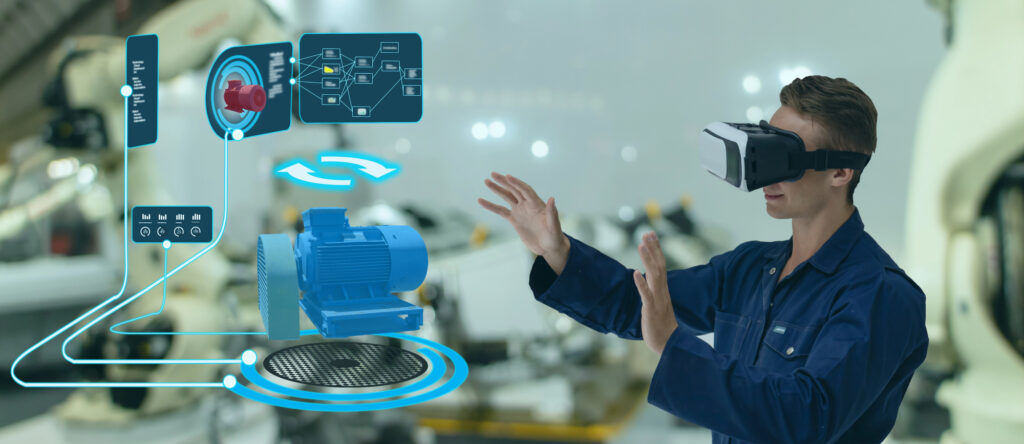Technologies Shaping the Future of Displays – Part 1
Angie Kellen, Director, Client Services, Open Sky Communications
 Building on my previous blog “The Very Bright Show that was Display Week 2024”, which reviewed the amazing displays at the event, I want to highlight some of the technologies behind the display that are set to revolutionize the industry. It’s not just about what we see on the screen but also about the underlying components and systems that make these innovations possible. There are many advancements ranging from display manufacturing, drivers and controllers to thermal and power management solutions. For this blog, I will focus on micro light-emitting diodes (microLEDs) and how they are transforming the display landscape, from their inherent advantages over traditional technologies to their applications across various industries. In looking at the latest developments with this technology, it’s clear that they will continue to play a crucial role in shaping the future of the display industry.
Building on my previous blog “The Very Bright Show that was Display Week 2024”, which reviewed the amazing displays at the event, I want to highlight some of the technologies behind the display that are set to revolutionize the industry. It’s not just about what we see on the screen but also about the underlying components and systems that make these innovations possible. There are many advancements ranging from display manufacturing, drivers and controllers to thermal and power management solutions. For this blog, I will focus on micro light-emitting diodes (microLEDs) and how they are transforming the display landscape, from their inherent advantages over traditional technologies to their applications across various industries. In looking at the latest developments with this technology, it’s clear that they will continue to play a crucial role in shaping the future of the display industry.
MicroLED technology represents one of the most significant advancements in the display industry, promising superior performance over traditional liquid crystal display (LCD) and organic light-emitting diode (OLED) technologies. While we are now familiar with light-emitting diodes (LEDs), microLEDs are less known even though there have been many breakthroughs using this technology.
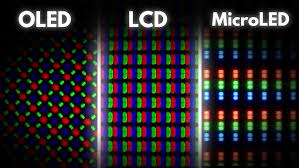
(Photo from Android Authority)
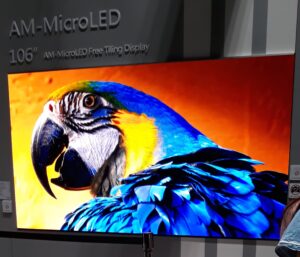 Improved Color Performance Innovations
Improved Color Performance Innovations
Quantum Dot Enhancement involves incorporating quantum dots into microLED displays to enhance color accuracy and brightness. They can be tuned to emit specific wavelengths of light, improving the color gamut and ensuring vibrant, true-to-life colors.
Full-Color microLED arrays are now possible and highly efficient due to the innovations in epitaxial growth techniques and advanced color conversion materials. These advancements result in displays with exceptional color accuracy and uniformity.
Energy Efficiency and Longevity
Energy efficiency is a critical factor in the design of modern displays, especially as the demand for portable and wearable devices grows. MicroLEDs offer significant energy savings compared to other display technologies. MicroLED displays consume up to 50 percent less power than OLED displays and up to 90 percent less power than LCD displays. As a result, microLEDs can deliver brighter images while consuming less power, making them ideal for energy-sensitive applications. The energy efficiency of microLEDs directly translates to longer battery life, which is a significant advantage for smartphones, wearables, and other portable electronics. In addition, innovations in heat dissipation materials and structures have been implemented to manage the heat generated by high-brightness microLEDs, ensuring stable operation and extending the lifespan of the displays.
Not surprisingly, the potential impact of microLEDs extends beyond traditional displays. There are many advancements and new applications for high-performance displays enabled by microLED technology.
Design Scalability and Flexibility
MicroLEDs offer unparalleled scalability and flexibility in display design, enabling the creation of displays of various sizes, shapes, and resolutions. This versatility is paving the way for new applications and form factors in the display industry.
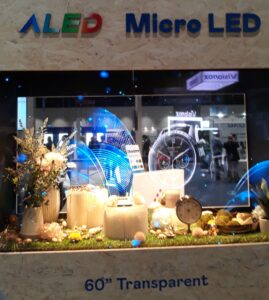 Flexible substrates that can accommodate the precise placement of microLEDs enable the development of displays that can be bent, folded, or even rolled up. While maintaining the high brightness and color accuracy of microLED technology, this flexibility opens up new possibilities for display design, including foldable smartphones and wearable displays. Transparent displays integrate microLEDs into transparent substrates, allowing for the creation of see-through screens and integration into windows or other surfaces. MicroLEDs can be arranged in custom shapes and resolutions, allowing for highly specialized display configurations where displays need to conform to unique structural designs.
Flexible substrates that can accommodate the precise placement of microLEDs enable the development of displays that can be bent, folded, or even rolled up. While maintaining the high brightness and color accuracy of microLED technology, this flexibility opens up new possibilities for display design, including foldable smartphones and wearable displays. Transparent displays integrate microLEDs into transparent substrates, allowing for the creation of see-through screens and integration into windows or other surfaces. MicroLEDs can be arranged in custom shapes and resolutions, allowing for highly specialized display configurations where displays need to conform to unique structural designs.
Display Applications Across Industries
MicroLEDs are finding applications across a wide range of industries, each benefiting from the unique advantages of this technology. From consumer electronics to automotive and healthcare, microLEDs are enabling new and innovative display solutions.
In the consumer electronics sector, microLEDs are set to revolutionize the market for televisions, smartphones, and wearables. High-end televisions with microLED technology offer unmatched picture quality, while smartphones with microLED displays benefit from lower power consumption, longer battery life, and innovations in miniaturization. Wearables, such as smartwatches, fitness trackers, and even smart clothing, can also take advantage of the energy efficiency and flexibility of microLEDs.
The automotive industry is increasingly adopting advanced display technologies to enhance the driving experience. MicroLEDs are ideal for automotive displays due to their high brightness, durability, and flexibility. They can be used in dashboards, head-up displays (HUDs), and infotainment systems, providing clear and vibrant information to drivers and passengers.
In healthcare, the precision and clarity of microLED displays make them well-suited for medical imaging and diagnostic tools. The high resolution and accurate color reproduction of microLEDs allow for detailed visualization of medical images, which is crucial for accurate diagnosis and treatment planning.
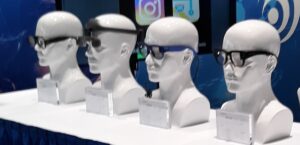 MicroLEDs are also making significant inroads into the Augmented Reality (AR) and Virtual Reality (VR) markets. The high pixel density, brightness, and low latency of microLEDs make them ideal for headsets and smart glasses, where image quality and response time are critical for an immersive experience. The small size and lightweight nature of microLEDs also contribute to more comfortable and ergonomic wearable devices.
MicroLEDs are also making significant inroads into the Augmented Reality (AR) and Virtual Reality (VR) markets. The high pixel density, brightness, and low latency of microLEDs make them ideal for headsets and smart glasses, where image quality and response time are critical for an immersive experience. The small size and lightweight nature of microLEDs also contribute to more comfortable and ergonomic wearable devices.
Digital signage and large-scale displays benefit from the scalability, brightness, and durability of microLED technology. These displays are often used in outdoor environments, where visibility under bright sunlight and resistance to weather conditions are essential. MicroLEDs provide the necessary performance to meet these demands, making them a preferred choice for advertising, information displays, and stadium displays.
MicroLED Adoption Challenges
While microLED technology offers numerous advantages, there are also challenges to its widespread adoption. However, ongoing research and development efforts are addressing these challenges, paving the way for broader implementation of microLEDs in various applications.
One of the primary challenges facing microLED technology is the complexity of manufacturing. The process of transferring millions of tiny microLEDs onto a substrate with high precision is technically demanding and requires advanced equipment. This complexity has led to higher production costs, which has slowed the adoption of microLEDs in consumer products.
Achieving high yields in microLED manufacturing is another challenge. The small size of microLEDs makes them susceptible to defects during the manufacturing process, which can impact their overall yield and increase costs. However, advancements in manufacturing techniques, such as mass transfer and wafer bonding, are helping to improve yields and scalability.
The high cost of microLED displays is currently one of the biggest barriers to their widespread adoption. However, as manufacturing processes improve and economies of scale are realized, the cost of microLEDs is expected to decrease. This will make them more accessible for a broader range of applications and consumers.
MicroLED technology is rapidly evolving, with improved color performance, energy efficiency, and the development of flexible and transparent displays. As these advancements continue, microLEDs are poised to advance the display industry, offering unparalleled performance and ushering in new possibilities for future applications. While Display Week 2024 provided a glimpse into the future of display technology, it is clear that microLEDs will play a critical role in shaping the future of the display industry and beyond.
